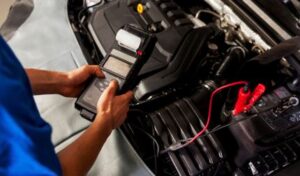As consumers become increasingly environmentally sensitive, electric cars have grown in popularity over the past decade. These innovative vehicles come with unique advantages such as lower operating costs, reduced emissions, and advanced tech features.
Yet, electric car charging can be complicated. This article aims to demystify the charging process, highlighting the factors influencing the charging time, real-world examples, and practical tips for owners and prospective buyers.
Understanding Electric Car Charging
BEVs and PHEVs are the main types of electric cars (PHEVs). BEVs run solely on electric power, whereas PHEVs have a conventional engine as a backup when the battery runs out.
Charging an electric car is fundamentally about replenishing the car’s battery. Recharge depleted batteries.
EV charging levels, namely Level 1, Level 2, and DC Fast Charging, significantly affect the charging time. Level 1 charging uses a standard 120-volt AC household outlet, making it the slowest method, generally suitable for overnight charging.
Level 2 charging uses a 240-volt AC source, charging EVs faster and making it a popular choice for both home and public charging stations. DC Fast Charging, as the name implies, is the fastest method, leveraging direct current (DC) power to provide rapid charges, making long road trips feasible with EVs.
Factors Influencing the Charging Time of an Electric Car
Electric car charging times vary.
One primary factor is the car’s battery size. Simply said, the higher the battery capacity (measured in kilowatt-hours or kWh), the longer it takes to charge. With the same charger, a car with a 100 kWh battery takes around twice as long to charge.
The type of charger used also impacts charging time. As mentioned earlier, Level 1 chargers are slower but easily accessible, whereas Level 2 chargers are faster but may require professional installation at home or locating a public charging station. DC Fast Charging stations provide the quickest charging but are still less common than Level 1 and Level 2 chargers.
The current state of the battery also affects the charging time. An entirely depleted battery will naturally take longer to charge than a half-empty one.
Lastly, environmental factors like the ambient temperature can influence charging speed. Cold temperatures can slow down the charging process, while extreme heat can temporarily limit the battery’s capacity to accept a charge.
How long does it take to charge an electric car?
Electric vehicle (EV) charging time depends on numerous factors:
Battery Size: Bigger batteries charge slower. EV batteries are calculated in kwh of electricity (kWh).
Current Charge Level: A half-full battery charges faster than a near-empty one. As batteries near full capacity, charging slows.
Charging Speed: Speed depending on charger. Level 1 home outlets require over 24 hours to fully charge a large battery, whereas Level 2 home-installed chargers take 4 to 9 hours, and Level 3 fast-charging stations may charge to 80% in 20 to 30 minutes. Note that not all EVs can accept the fastest charging rates.
Temperature: Battery performance can be affected by temperature, so charging might take longer in extreme cold or heat.
A Tesla Model S Long Range with a 100 kWh battery might take 12 hours to charge on a Level 2 home charger or 45 minutes on a Supercharger (Tesla’s Level 3 charger).
Timeframes for Charging Electric Cars
Let’s use the Tesla Model 3, Nissan Leaf, and Chevrolet Bolt EV to illustrate these ideas.
A Level 2 charger can fully charge the 75 kWh Tesla Model 3 in 8 hours, whereas a DC Fast Charging station can do 80% in 30 minutes.
A Level 2 charger takes 8 hours to fully charge the Nissan Leaf, which has a 40 kWh battery. A DC Fast Charger takes 60 minutes to charge 80%.
The Chevrolet Bolt EV, having a 66 kWh battery, takes around 9.5 hours for a full charge on a Level 2 charger and about 70 minutes for an 80% charge using a DC Fast Charger.
These examples demonstrate that charging time varies widely based on the car model, battery size, and charging method used.
Advanced Concepts in EV Charging
Charging an EV isn’t a linear process. It follows a “charging curve,” which generally means that charging speed decreases as the battery gets closer to full capacity. DC Quick Charging accentuates this effect to protect the battery.
Battery health also influences the charging time over the long term. As batteries age, they lose some capacity (a process known as degradation), which can gradually increase charging times.
Emerging technologies in EV charging, like ultra-fast charging and battery swapping, promise to further reduce charging times in the future.
Practical Tips for Charging an Electric Car
Maximizing efficiency in charging is essential for EV owners. Experts recommend keeping your battery between 20% and 80% for daily use to extend its lifespan.
Home charging is the most convenient and often the cheapest option. Investing in a Level 2 home charging station can be a smart decision if your daily driving exceeds the range that a nightly Level 1 charge provides.
Lastly, understanding how to effectively use public charging stations, including locating them and knowing when best to use them, can save you both time and money.
Conclusion
Electric mobility requires knowledge of electric car charging times. This information may help you choose an EV and maximize its potential.
Electric cars will become more practical and sustainable as technology improves charging times and ranges.
Frequently Asked Questions About Charging Electric Cars
Can You Charge an Electric Car in the Rain?
Absolutely. To operate safely in rain, EV charging stations have multiple layers of protection. Waterproof connections and a cover protect the charging port.
How Much Does Electric Vehicle Charging Cost?
The cost depends on the car’s battery size, charging method, and local electricity prices. For home charging, multiply the car’s battery capacity in kWh by your home electricity rate per kWh.
Can I Use a Regular Outlet to Charge My Electric Car?
Yes, you can. Level 1 charging uses 120-volt AC household outlets. Unfortunately, it’s the slowest charging technique and may be impracticable if your daily driving range surpasses overnight charging.
How Often Should I Charge My Electric Car?
The frequency of charging depends on your driving habits. If your daily commute is within the car’s electric range, charging overnight at home may be sufficient. For extended driving, you might need to utilize public charging stations.
Can Electric Cars Overcharge?
No, they can’t. EV battery management systems prevent overcharging. The battery stops charging when fully charged.
Answering these questions should help you comprehend electric car charging’s safety, cost, practicality, and management.






